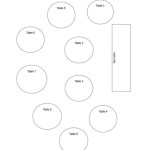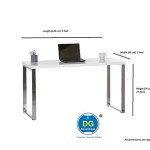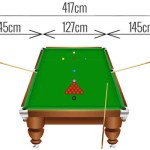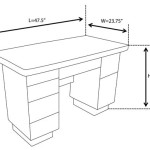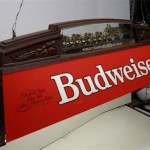Stripping a Dining Room Table: A Comprehensive Guide
Stripping a dining room table is a rewarding but potentially challenging project. It allows for the restoration of a beloved piece of furniture, removing layers of old finishes to reveal the wood's natural beauty and character. Whether the goal is to refinish the table with a new stain or simply update its appearance, understanding the proper techniques and materials is crucial for achieving a professional and satisfactory outcome. This article provides a detailed guide to stripping a dining room table, covering preparation, material selection, the stripping process itself, and important safety considerations.
Before commencing any work, careful consideration should be given to the type of finish currently on the table. Older tables may have layers of varnish, shellac, lacquer, or paint, each requiring different approaches for effective removal. Identifying the existing finish, either through testing or observation, will significantly influence the choice of stripping agent and techniques. Furthermore, consider the wood type of the table itself. Some woods are more delicate than others and require gentler stripping methods to prevent damage.
Key Point 1: Preparation and Workspace Setup
The preparation phase is arguably the most crucial step in stripping a dining room table. A well-prepared workspace not only ensures a smoother process but also significantly minimizes potential hazards and cleanup efforts. This includes selecting a suitable location, providing adequate ventilation, and protecting the surrounding environment.
Workspace Selection: Choose a well-ventilated space, ideally outdoors or in a garage with open doors and windows. Stripping agents release fumes that can be harmful if inhaled for extended periods. If working indoors is unavoidable, ensure adequate ventilation and use a respirator specifically designed for organic vapors.
Surface Protection: Cover the floor with heavy-duty plastic sheeting or drop cloths. This will prevent the stripping agent and dissolved finish from damaging the flooring. Secure the edges of the sheeting with painter's tape to prevent slippage and ensure complete coverage.
Furniture Protection: If the table has detachable legs or leaves, remove them to simplify the stripping process. Cover any nearby furniture with plastic sheeting to protect them from splashes or accidental contact with the stripping agent. Remove any hardware, such as hinges or pulls, and store them safely to prevent loss or damage.
Gathering Supplies: Assemble all necessary tools and materials before starting the project. This includes the chosen stripping agent, various sizes of paintbrushes for application, plastic scrapers (metal scrapers can damage the wood), steel wool (fine grade), chemical-resistant gloves, safety glasses or goggles, a respirator, a metal container for disposing of used stripping agent and waste, and rags or paper towels.
Personal Protective Equipment (PPE): Wearing appropriate PPE is paramount for safety. Chemical-resistant gloves protect the skin from irritation and chemical burns. Safety glasses or goggles shield the eyes from splashes. A respirator filters out harmful fumes, preventing respiratory issues. Ensure the respirator is properly fitted and rated for the specific stripping agent being used.
By diligently preparing the workspace and assembling the necessary supplies, the stripping process can be undertaken safely and efficiently, minimizing potential hazards and maximizing the likelihood of a successful outcome.
Key Point 2: The Stripping Process: Application and Removal
The actual stripping process involves applying the chemical stripping agent to the table's surface, allowing it to soften the existing finish, and then carefully removing the softened material. This requires patience, attention to detail, and adherence to the manufacturer's instructions for the chosen stripping agent.
Applying the Stripping Agent: Using a dedicated paintbrush, apply a thick, even layer of the stripping agent to a small section of the table. Avoid applying too much at once, as this can lead to drips and uneven softening. Follow the grain of the wood when applying the stripper. Ensure complete coverage, especially in corners and crevices. The thickness of the application should be dictated by the number of layers of finish present on the table.
Dwell Time: Allow the stripping agent to dwell for the recommended time indicated on the product label. This dwell time allows the chemicals to penetrate and soften the existing finish. The length of dwell time will vary depending on the type of stripping agent and the thickness and type of finish being removed. Periodically check the progress by gently scraping a small area with a plastic scraper. If the finish is easily removed, the dwell time is sufficient.
Scraping the Softened Finish: Using a plastic scraper, carefully remove the softened finish. Work in the direction of the wood grain to avoid scratching or damaging the wood. Apply consistent pressure and avoid gouging the surface. For intricate areas and corners, use smaller scrapers or specialized tools designed for detail work. Dispose of the removed finish and used stripper in a metal container for proper disposal according to local regulations.
Second Application (if necessary): If the initial application did not completely remove all layers of finish, repeat the process. Apply another coat of stripping agent to the remaining finish, allow it to dwell, and then scrape it away. Multiple applications may be necessary for tables with thick or multiple layers of finish.
Neutralizing and Cleaning: After removing all the finish, neutralize the stripping agent according to the manufacturer's instructions. This typically involves washing the table with a specific neutralizing solution or mineral spirits. This step is crucial to stop the chemical action of the stripping agent and prepare the wood for refinishing. Wipe the table thoroughly with clean rags or paper towels to remove any residue. Allow the table to dry completely before proceeding to the next step.
The stripping process demands careful execution and attention to detail. Applying the stripper evenly, allowing sufficient dwell time, and using appropriate tools for removal are all crucial for achieving a clean and damage-free surface.
Key Point 3: Post-Stripping Procedures: Cleaning and Sanding
Once the stripping agent has been removed and neutralized, the table requires further cleaning and preparation to ensure a smooth and even surface ready for refinishing. This stage involves removing any remaining residue, addressing surface imperfections, and preparing the wood for the application of stain or other finishes.
Removing Residue: Even after neutralizing the stripping agent, some residue may remain on the surface of the wood. Clean the table thoroughly with mineral spirits or denatured alcohol to remove any remaining traces of the stripper. Use clean rags and wipe in the direction of the wood grain. Change the rags frequently to prevent spreading the residue around. Allow the table to dry completely before proceeding.
Sanding: Sanding is essential for smoothing the wood surface and removing any imperfections, such as scratches or gouges. Begin with a medium-grit sandpaper (e.g., 120-grit) to smooth out any rough areas. Work in the direction of the wood grain, applying even pressure. Avoid sanding too aggressively, as this can create uneven surfaces or damage the wood. Follow up with a finer-grit sandpaper (e.g., 220-grit) to further refine the surface and prepare it for finishing.
Dust Removal: After sanding, thoroughly remove all sanding dust. Use a vacuum cleaner with a soft brush attachment to remove the majority of the dust. Follow up with a tack cloth to pick up any remaining particles. A clean, dust-free surface is crucial for achieving a smooth and even finish. Consider using compressed air to blow dust out of crevices and hard-to-reach areas.
Assessing the Wood: Carefully inspect the wood surface for any remaining imperfections or damage. Fill any holes or gouges with wood filler, matching the color of the wood as closely as possible. Allow the wood filler to dry completely and then sand it smooth. If the table has any loose joints, repair them before proceeding to the finishing stage.
Optional: Wood Conditioner: Consider applying a wood conditioner before staining. This helps to ensure even stain absorption, particularly on softwoods or woods with uneven grain patterns. Apply the wood conditioner according to the manufacturer's instructions and allow it to dry completely before staining.
The post-stripping procedures are critical for ensuring a high-quality finish. Thorough cleaning, careful sanding, and dust removal all contribute to a smooth, even surface that is ready to accept the chosen stain or protective coating. Ignoring these steps can result in an uneven or flawed final product.

She S Crafty How To Strip And Stain A Dining Room Table

How To Strip Furniture With Ease Craving Some Creativity

Diy Removing Finish From Furniture Dining Table Cecilia Moyer Lifestyle Blogger

She S Crafty How To Strip And Stain A Dining Room Table

Stripping Painted Furniture Diy Dining Table Makeover

She S Crafty How To Strip And Stain A Dining Room Table

How To Strip A Dining Room Table Werefinish

Refinishing A Dining Table Diy Beautify Creating Beauty At Home

She S Crafty How To Strip And Stain A Dining Room Table

Stripping Paint

